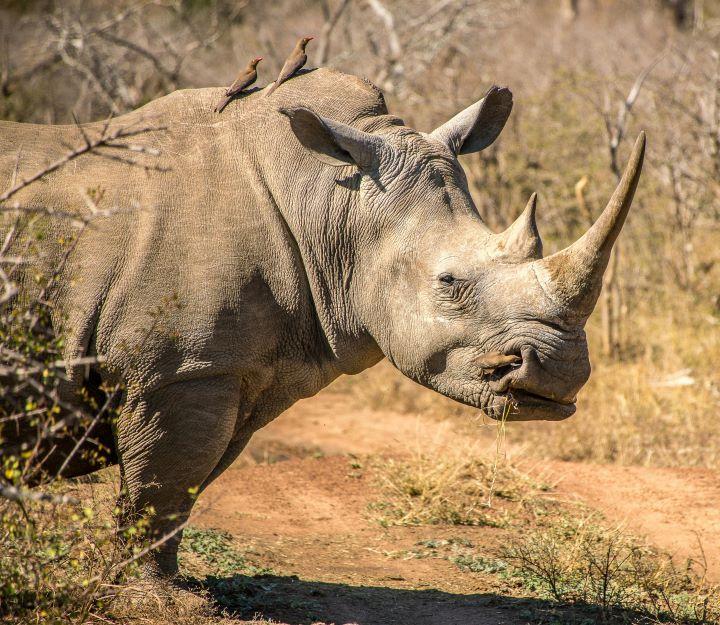Any hunter, worth their salt, no doubt dreams of checking big game hunting in Africa trip off their bucket list. And with such a variety of prime species on offer, who would blame them? But what is big game, where do you hunt them, and what can Africa offer you on a game hunting safari that you won’t find anywhere else?
[DYNAMIC-BLOGTABLEOFCONTENT]
What is Big Game?
Africa carries some of the most diverse wildlife for the sport hunting enthusiast, including the renowned and traditional symbols of the African game hunting safari, like the Big 5, crocodile, hippopotamus, and large antelope found nowhere else on earth.
The African continent is a hunter’s paradise and houses some of the best hunting territories worldwide. With vast expanses of bushveld, a great climate, and a lean towards conservation initiatives rapidly on the rise, Africa is a premium game hunting destination both now and in the future.
What are African Big Game, and Where are They Hunted?
The Big 5 – Safari Hunting of the Greats
The African Lion
These apex predators aren’t known as the king of the jungle in vain. Possessing muscular bodies, keen hunting skills, and senses, and males having an unmistakable mane (or crown), the lion (Panthera leo) is the largest of Africa’s cats. These apex predators prey on wildebeest, buffalo, zebra, and many antelope species. Lions don’t have a specific mating season, with females reproducing from four years of age. Gestation lasts 110 days, with 1-4 cubs being born.
Lions are social creatures, and there are typically three structures within the hierarchy:
- The Pride – this a group made up of related individuals and offspring
- Coalition – a male-only group
- Social unit – found within the pride, this is a female and offspring group.
Where can I hunt Lions on an African Hunting Safari?
Popular lion hunting destinations include:
- South Africa
- Botswana
- Namibia
- Zambia
- Zimbabwe
- Tanzania
- Mozambique
- Central African Republic

The Leopard
Well-adapted to varied habitats, the leopard (Panthera pardus) is an icon of big game hunting in Africa. Their beautiful dark golden pelt with black rosettes ensures they are high on the list for big game hunters looking for a remarkable, unusual, and exquisite game hunting trophy. These nocturnal big cats are territorial and solitary by nature, with adults only meeting during mating season. Leopards mate year-round in most areas, and 2–4 cubs are typical per litter. Extremely alert but also shy, the elusive leopard is a challenge for any big game hunter.
These carnivorous cats prey on antelope such as impala, the common duiker, bushbuck, black-backed jackal, and genet.
Popular Leopard Hunting Destinations:
Popular hunting destinations are as follows, but not limited to:
- Zimbabwe
- Zambia
- Mozambique
- South Africa
- Ethiopia
- Namibia
- Tanzania

The Cape Buffalo
As one of the most dangerous members of the Big 5, the Cape buffalo (Syncerus caffer caffer) is one you wouldn’t want to miss when big game hunting in Africa. These long–bodied yet stocky bovines have a short standing height, but with some weights reaching over 1,900 lbs, they pack a mean punch! A distinct Cape buffalo characteristic is its horn bases, which virtually meet in the middle and are referred to as a “boss.”
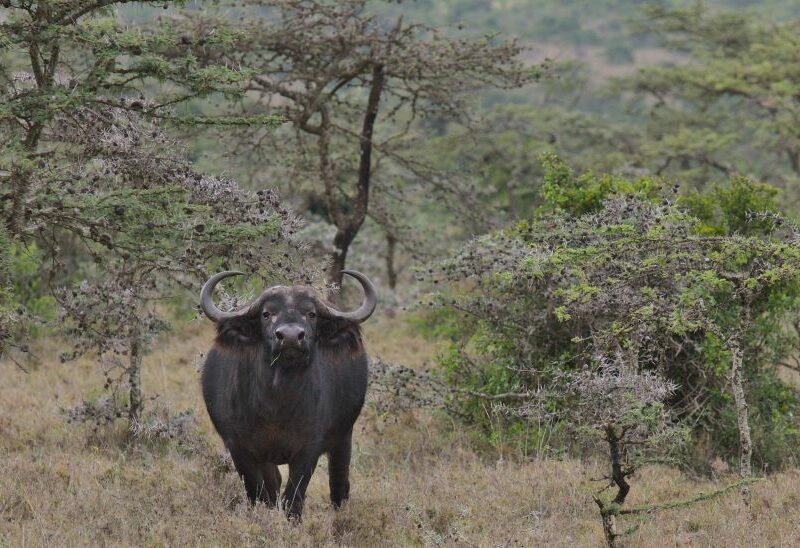
Popular Cape buffalo hunting areas in Africa include, amongst others:
- South Africa
- Tanzania
- Namibia
- Zimbabwe
- Mozambique
- Zambia
The Elephant
These are the largest living land mammals and having them on your game hunting bucket list is one way to guarantee an exhilarating and challenging game hunting safari! The African elephant (Loxodonta Africana) is known for habitats spanning savannah, forest, desert, and marshland. As long as there is a reliable water source nearby (they can consume up to 11 gallons per day), elephants can make a home in almost any environment. The elephant is a browser, consuming up to 660 pounds of leaves, bark, fruits, roots, etc. This African big game seeks rest during the heat of the day and sleeps 3–4 during the night, their mating season revolves around the rainy season, and females are considered fertile well into their 40s.
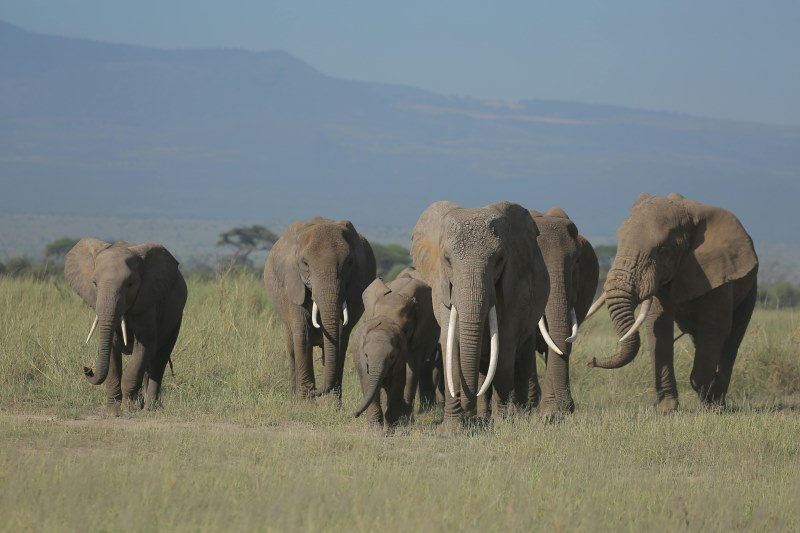
Popular Hunting Destinations for the African Elephant
- Mozambique
- Zimbabwe
- Tanzania
- South Africa
- Cameroon
- Zambia
- Namibia
- Botswana
The Rhinoceros
Two rhino species inhabit Africa, the white rhino (Ceratotherium simum) and the black rhino (Diceros bicornis), and both are available for safari hunting expeditions. White rhinos can weigh up to 3,500 pounds for females, while male white rhinos can be well over 5,000 lbs. Black rhinos are slightly smaller, with their weight ranging between 1,800-3,500 pounds in adulthood.
A distinct differentiation between them is their mouth shape: White rhinos possess a broad, square jaw suited to their grazing lifestyle, while the black rhino has a pointed jaw to assist in its browsing type diet. The most notable and famed characteristic of this African big game is their horns. The white rhino has the longer horns between the two African rhinos and can reach over 50 inches.
Rhino Hunting Destinations in Africa
Only two destinations in Africa offer rhino hunting:
- Namibia
- South Africa
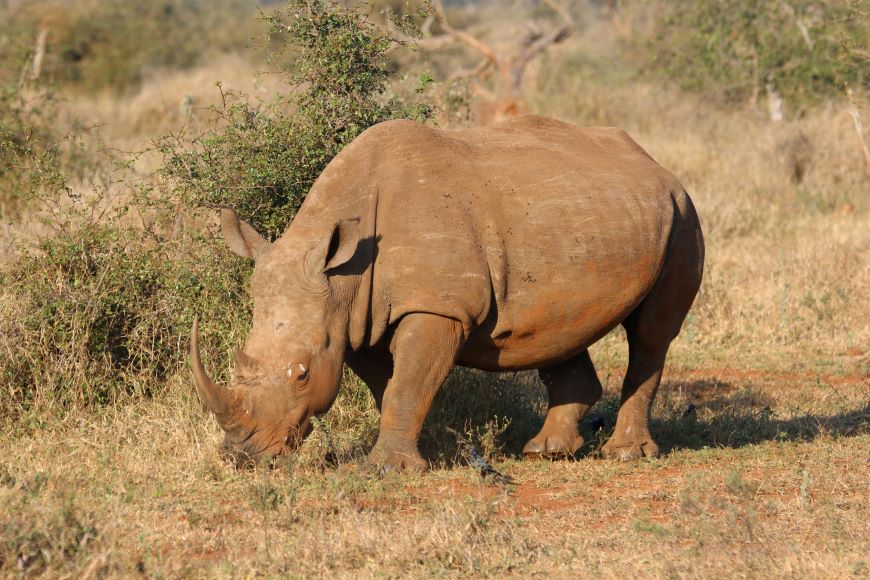
The Nile Crocodile
This freshwater-dwelling giant calls 26 countries across the African continent home. Nile crocodiles (Crocodylus niloticus) are apex predators that attack almost anything that crosses their path, from wildebeest and other buck to fish, water birds, and even humans. Male Nile crocodiles typically reach 11-15.5 ft, and weigh between 500–1,600 pounds. There have, however, been monster crocodiles weighing 2,000 pounds or more! The challenge of hunting this man-eating crocodile will be a hunt to test your nerves, skills, and patience, and certainly one you won’t forget in a hurry!
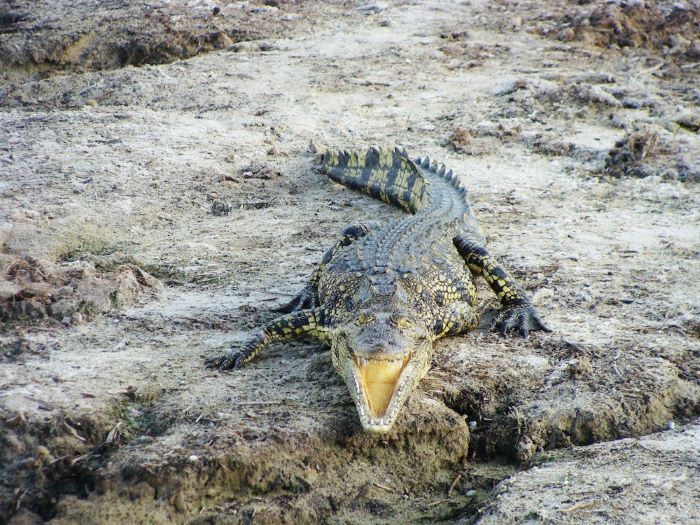
Popular Destinations for Hunting Crocodile in Africa
- Ethiopia
- Tanzania
- Namibia
- Mozambique
- South Africa
- Zimbabwe
The Hippopotamus
Another water-based member of the African big game, the hippopotamus (Hippopotamus amphibious), is the third largest land mammal, after the elephant and rhino. These barrel-shaped animals can reach average sizes of around 2,800 pounds for females and more than 3,000 pounds for males. Making their home in Africa’s rivers, swamps, and lakes, bulls are extremely territorial of their waters and will make use of their impressive incisors as both defense and attack mechanisms. When planning big game hunting in Africa, keep the hippo on your radar if you plan on branching into the Dangerous 7.
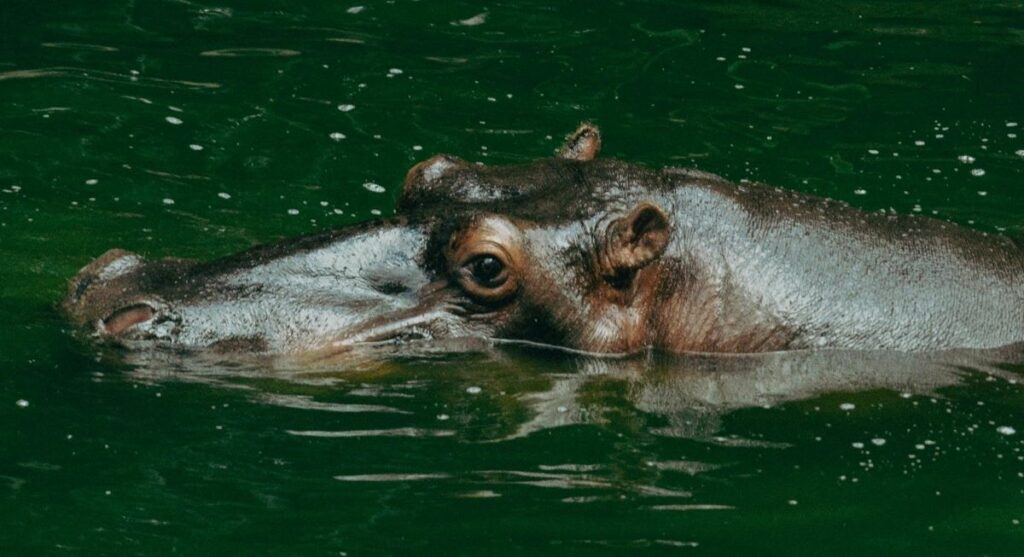
Popular Hippo Hunting Destinations
- Mozambique
- Tanzania
- Uganda
- Zimbabwe
- South Africa
- Zambia
Other Types of African Big Game
African big game hunting safaris are not aimed at only the Big 5, or Dangerous 7, but can also include many of Africa’s antelope species that are considered big game. These plains game are a very different type of hunt compared to the above; many say a hunt for these species can be seen as a more relaxed affair with a lesser threat of danger; but don’t worry, these African big game are just as exciting and rewarding as their more famous counterparts. These are some of the other big game species available and are equally enjoyable to hunt and are just as rewarding when it comes to the all-important trophies of your big game hunting in Africa. Read on for more about these “not so typical” African big game targets.
The Kudu
There are two species of this spiral-horned antelope: The Greater Kudu (Tragelaphus strepsiceros) and the Lesser Kudu (Tragelaphus imberbis). The main difference is that the Greater kudu is bigger than the Lesser kudu, so not too difficult to remember, although these antelope inhabit different areas. As with other antelope species, kudu males form their own groups and only interact with females during mating season. When talking shot placement for this big game antelope, be aware that if a shot isn’t 100% on target, wounded males are known to charge in the direction of the shot, while injured females will take off running for miles if possible.
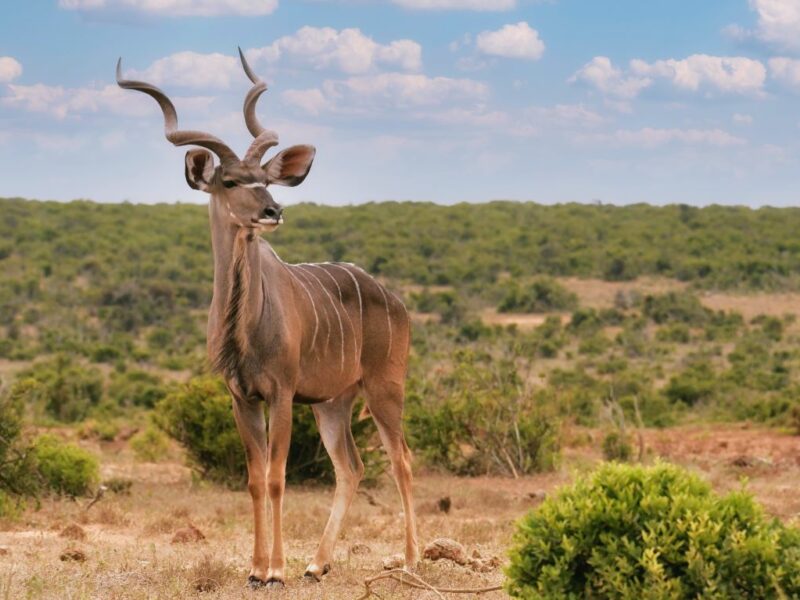
Popular Kudu Hunting Destinations in Africa
Greater Kudu
- Zambia
- South Africa
- Namibia
- Botswana
- Mozambique
- Zimbabwe
Lesser Kudu
- Ethiopia
- Tanzania
- Uganda
The Oryx
These uniquely marked safari hunting targets are divided into four main groups:
- South African Oryx or Gemsbuck (Oryx gazella) (which is the largest),
- East African Oryx (Oryx beisa)
- Scimitar–horned Oryx (Oryx dammah)
- Arabian Oryx (Oryx leucoryx).
All species are well-adapted to semi–arid and desert environments. The only species with a significant difference in appearance is the Scimitar–horned Oryx, which doesn’t have the same dark leg markings as the others and whose horns curve backward.
Oryx Hunting Destinations in Africa
South Africa Oryx
- Botswana
- Namibia
- South Africa
- Zimbabwe
East African Oryx
- Tanzania
Scimitar – horned Oryx and Arabian Oryx
- South Africa (Native herds are not allowed to be hunted, however game reserves in South Africa offer this opportunity)
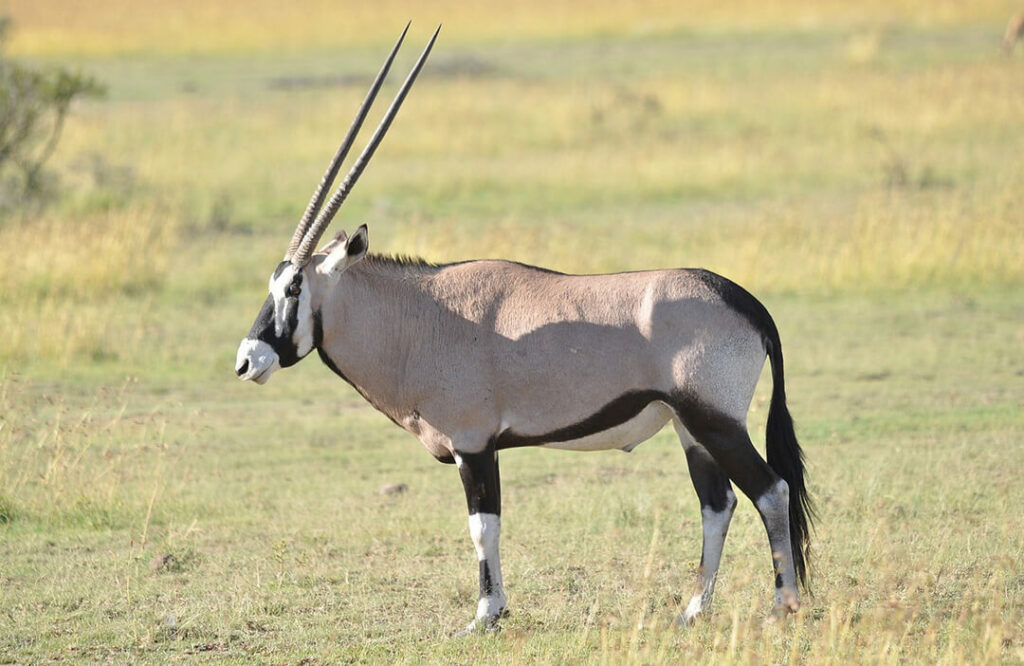
The Eland
The eland is the largest of all sub–Saharan antelope, and the Cape eland (Taurotragus oryx) is the most widely spread and readily available for safari hunting opportunities. Adult males can weigh around 1,000–1,300 lb, and females weigh 750-990 lb. Both sexes develop distinct spiral horns, present from birth as small nubs. Cape eland can sustain a 14mph gait for extended periods but tire quickly when sprinting at their maximum output of around 25mph.
Other subspecies of eland include the Livingston eland (Taurotragus oryx livingstonei), known for their distinct white vertical stripes along the side of the body, and the Lord Derby eland (Taurotragus derbianus), known as the giant eland, which is the largest antelope species and can run speeds of up to 43mph.
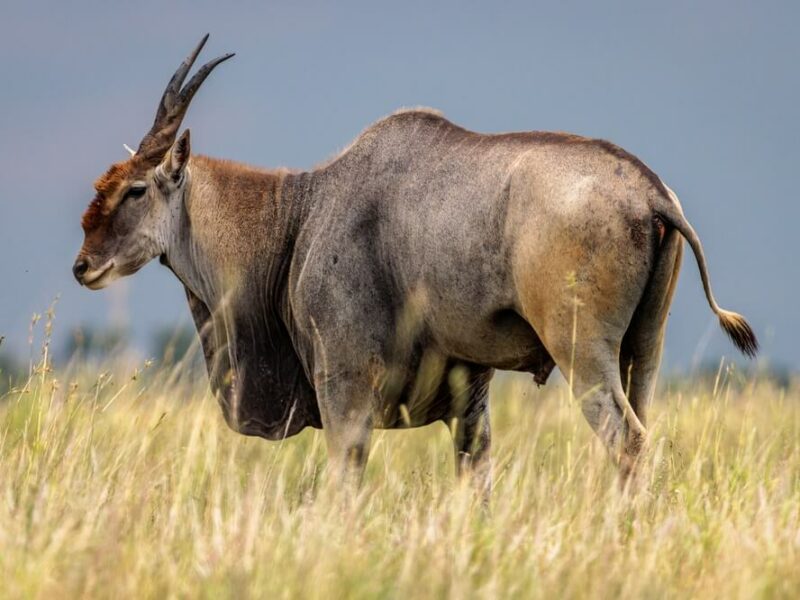
Popular Areas in Africa to Hunt Eland
Cape Eland
- South Africa
Livingstone Eland
- Tanzania
- Botswana
- Namibia
- Zimbabwe
- Mozambique
Lord Derby Eland
- Cameroon
- Central African Republic.
What makes Big Game Hunting in Africa so Popular?
Big game hunting in Africa is a hunting experience second to none, but why should you choose to plan your hunting safari on the African continent?
- One of the main spinoffs from big game hunting in Africa is that it funds conservation.
- Many countries throughout the continent have world-leading conservation approaches and techniques. This conservation is expensive, and many game hunting proceeds filter their way into conservation programs, whether government or private.
- This in turn supports jobs, increases the reach of conservation, and ensures that future generations will not only have the opportunity to hunt their own African big game; but will simply have the chance to see these animals in their natural wild habitats.
- Private and community hunting concessions play a role in the security and success of community initiatives, and employment, and the fees involved in these hunts directly impact the aforementioned.
- So while the focus of your hunting safari may be the trophy, there is so much more that your hunt is contributing to, such as the education and training of guides, rangers, trackers, and anti–poaching squads to ensure that the community as a whole will benefit from having employable and educated inhabitants.
Big game hunting in Africa remains a sought-after past time for hunters worldwide. If you’ve enjoyed reading about some of the popular big game options available, check out one of our latest blogs about Kudu Hunting in South Africa, or read more about Hunting the Notorious Dangerous 7 in Africa.
But whatever you do, don’t miss out on big game hunting…it’s addictive!
Author: A. Baker
